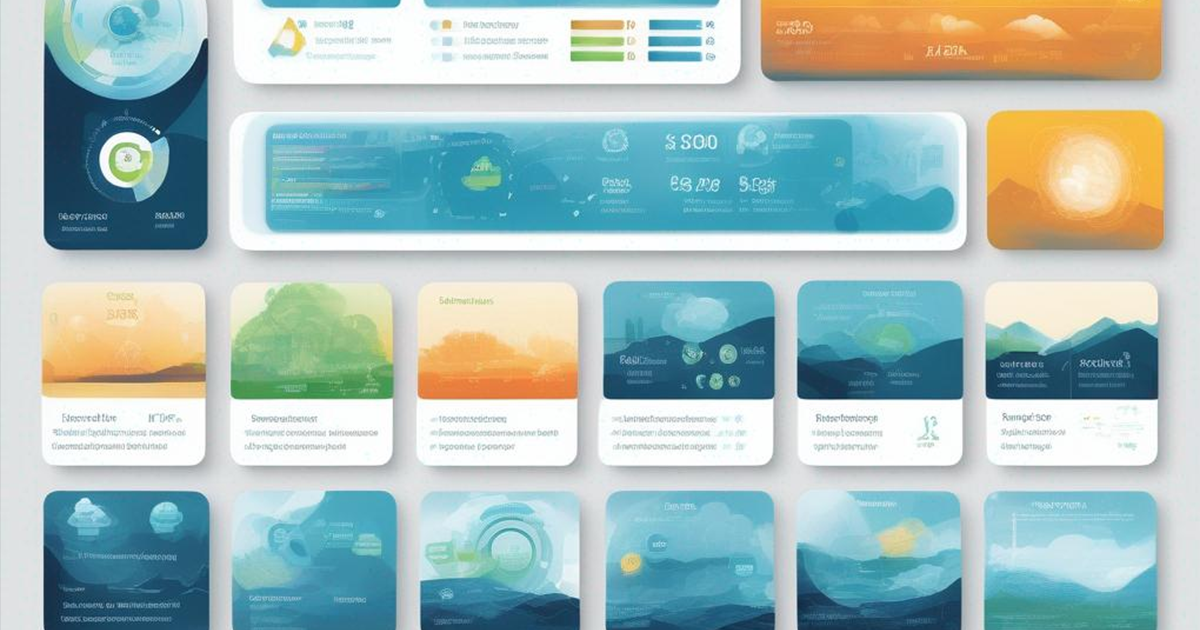Previously, we’ve covered the first two of four fundamental pillars of climate reporting: Governance and Strategy.
In this blog post let’s delve into the final two pillars Risk management and Metrics & targets.
The following is an extract from our recent webinar, you can always watch the full recording here.
The Risk management pillar
Risk management is all about disclosing what it is that the business is doing that identifies and prioritises those climate related risks; how are they embedded in enterprise risk management systems; and how you’re ensuring that you're capturing all of the risks, and that they're understood within the business.
These disclosures are a lot less onerous than perhaps the actual interactions around the recent opportunities. But it's very much just about having holistic transparency about how the business is managing climate right through from governance strategy through to the operational management and board and understanding at every level of the organisation - where is the risk assessment occurring, and how is it being communicated throughout the organisation?
The Metrics and targets pillar
Metrics and targets are the hard numbers that underlie all of these disclosures. This is your greenhouse gas emissions, your Scope 1, 2 and 3, your supply chain emission, and any other industry-based metrics and targets that are accepted disclosures in the industry that you're working in.
You also need to disclose if you have any targets around decarbonisation, if they have any certifications through external bodies, such as the science-based targets initiative.
The crux of metrics and targets is your emissions, and this is the one that most people, most companies are familiar with, and that's the Scope 1 and 2 - your direct emissions that occur within your organisation as a result of your activities.
What you need to be disclosing around that is absolute greenhouse gas emissions. And when we say that we mean emissions without adding any offsets, without any kind of external activities that you've taken that reduce those emissions after they occur. So, you need to be disclosing the entire number. You still can disclose if you purchase offsets to get to net zero or to reduce your emissions on an ongoing basis, but in the interest of transparency, the requirement is gross greenhouse gas emissions.
And Scope 3: Essentially that's engaging with your supply chain, understanding their emissions and understanding how they contribute to your overall greenhouse gas emissions.
Where to start with climate reporting
Easy wins
Scope 1 and 2 emissions
The easy win is to go and understand what your emissions are today if you haven't already. If you're a Group 1 reporter and you haven't already done this, I would say that this is an urgent scenario for you. You need to go and address this right now so that you can understand what data is missing, and whether or not it will be auditable next year which is likely to be required.
Climate risk assessment
Although a complex process, climate risk assessments offer crucial data for addressing significant challenges like climate scenario analysis. This information not only feeds into your Risk Management pillar but also fuels your ability to analyse different climate scenarios.
 Source: GHGProtocol.org
Source: GHGProtocol.org
Big challenges
Climate scenario analysis
There's a lot of interrelated variables, and it can require people from multiple disciplines to gather all of that information ingested and give you a response that's actually functional for your business. Thus, not only is it challenging to understand, but you need to have access to a qualified team.
There's not a huge amount of experience in Australia in climate scenario analysis. This is a big gap in the market, so we expect that those companies that leave it to the last minute are going to face a big challenge in even just finding anyone to support them through this process.
So again, start early. And the reason I say “start early” on these big challenges is because they do take time even just where to go on a climate scenario analysis can take around 4 months.
If you imagine the sheer number of companies that need to do this in the next 14 months, and the skills shortage, it's going to be really challenging for us nationally to even just get this done. So, the more companies that start now, the smoother it's going to be.
Supply chain carbon emissions
Supply chain emissions (scope 3) can be challenging because of the indirect nature and extensive supply chain involvement, which often spans multiple geographic regions and stakeholder types. Gathering comprehensive data on these emissions necessitates thorough engagement with suppliers, partners, and other third parties, alongside the challenge of standardising methodologies and ensuring accuracy across the entire value chain.
As mentioned earlier, there is a year leeway. You only have to report this in the second reporting year, but it can be really challenging because of the amount of engagement that you should be doing with your stakeholders in order to get to an accurate number.
If you start now, then you can work through all those potential challenges and any bugs that may come up without the time pressures of absolutely needing to report. It also means that if you do it this year rather than in 18 months’ time, you can have that time to troubleshoot and make sure that the answer that you're getting at the end of it is an accurate assessment of your supply chain carbon emissions.
-------
Not much time until mandatory climate reporting kicks in. If you’ve been following along this blog series, the message is pretty clear that the time to act is now, no matter where you are in the supply chain.
Watch the full webinar with sustainability expert from RSM and get all the details here.
Recent Articles
2025 in review: Milestones, insights and achievements
2025 – a year of that brought meaningful developments for Felix as we continue to address the evolving needs of organisations navigating complex supply-chain environments.
Top 10 reasons for a centralised vendor database
As organisations grow, so does the complexity of managing vendor relationships. Many still rely on spreadsheets or siloed systems, which can lead to inefficiencies, data inconsistencies, and compliance risks. A centralised vendor database offers a smarter, more scalable solution that brings structure, visibility, and control to procurement operations.
Here are the top 10 reasons why centralising your vendor data is a strategic move.
Five ways poor contract storage could be costing your organisation money
Contracts are the backbone of every business relationship – legally binding documents that define expectations, responsibilities, and value.
But what if the way your organisation stores those contracts is quietly costing you money?
Let's stay in touch
Get the monthly dose of supply chain, procurement and technology insights with the Felix newsletter.






